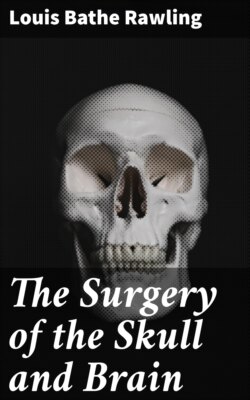Читать книгу The Surgery of the Skull and Brain - Louis Bathe Rawling - Страница 54
На сайте Литреса книга снята с продажи.
Symptoms.
ОглавлениеDuring the first few days subsequent to the injury the child merely suffers from the symptoms common to all severe head-injuries—concussion and brain irritation. The osseous lesion is obscured by the presence of a well-marked cephalhæmatoma. After the lapse of a short time—usually one to two weeks—the partial resolution of the hæmatoma allows one to observe, for the first time, that a definite tumour remains. This tumour is irreducible, pulsates freely, and may be translucent. If the protruding brain substance includes the precentral region—the motor area—definite weakness or paralysis of the opposite face and extremities may be observed. Usually, however, no such symptoms are forthcoming, and the child appears but little the worse for the accident. Shortly afterwards the tumour becomes more defined in outline, and careful palpation will reveal the defined margins of an osseous deficiency. Compression of the protruded mass will often throw the child into general convulsions, or induce a state of compression with dilated pupils, slow pulse, and stertorous respiration. Compression, however, seldom results in any marked diminution in the size of the tumour. The conditions may remain stationary, but, as a general rule, the hernial protrusion slowly increases in size and the child dies in general convulsions, preceded by symptoms of brain irritation or compression.
